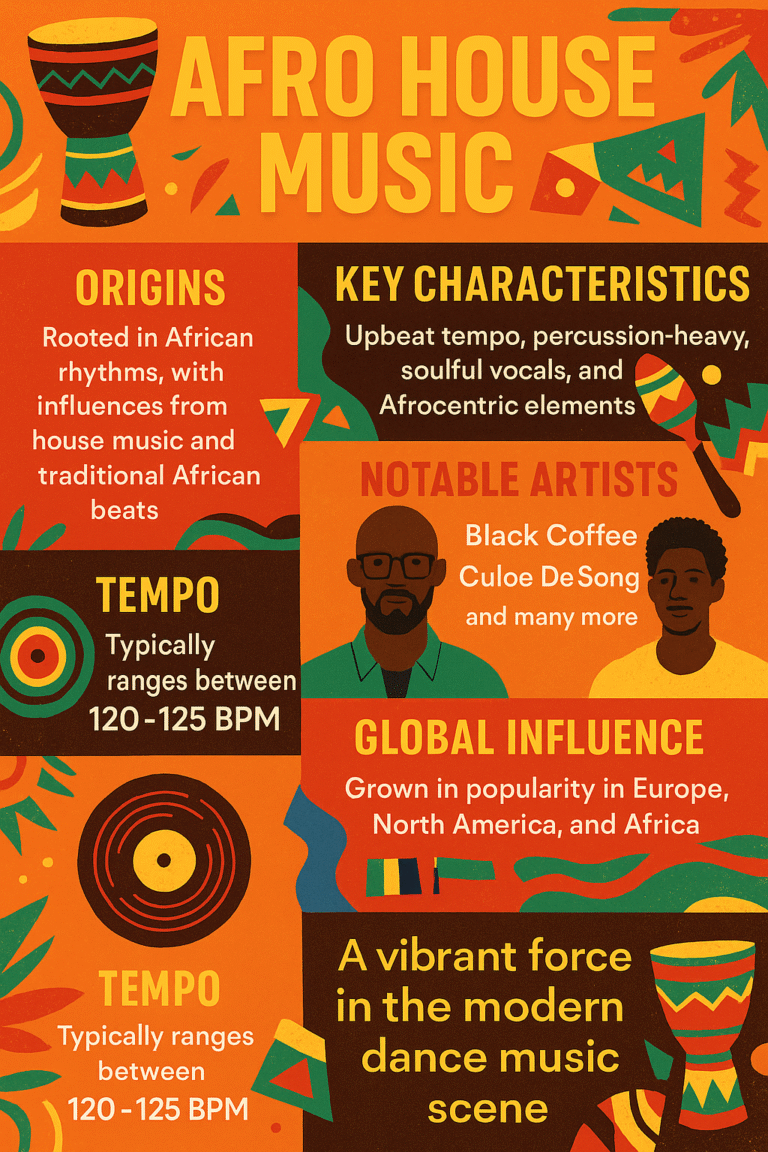Tour Dates | Shop | Contact
House music is one of the most popular genres in electronic dance music (EDM), but with its many subgenres and variations, it can sometimes be confusing to determine exactly what counts as house music. The genre is defined by a few key elements, but it also allows for creativity and evolution, leading to different styles within house music. Here’s a breakdown of what typically counts as house music.
1. The Four-on-the-Floor Beat
A defining feature of house music is the four-on-the-floor beat, where a bass drum hits on every beat of a 4/4 time signature. This steady and consistent kick drum creates the hypnotic rhythm that listeners associate with house music. It’s this driving beat that makes house music perfect for the dance floor.
- Why it matters: The four-on-the-floor rhythm is the foundational heartbeat of house music and is often the first sign that a song might fall within the genre.
2. Smooth and Deep Basslines
House music is known for its deep, groovy basslines. The bass provides the backbone of the track, often giving it a smooth, rolling feel. The basslines are usually repetitive, helping to create the hypnotic atmosphere that defines house music. This deep bass is often what makes house music stand out, giving it a groove that can keep people dancing for hours.
- Why it matters: The prominent bassline is essential to house music’s overall feel, helping to distinguish it from other genres.
3. Tempo: 120–130 BPM
House music generally has a moderate tempo between 120–130 beats per minute (BPM). This tempo range helps maintain an energetic yet accessible rhythm for dancing. It’s fast enough to keep the party moving but not so fast that it becomes overwhelming. This steady pace allows for long, immersive DJ sets that gradually build momentum.
- Why it matters: The tempo is often a key indicator of house music, though subgenres like progressive house may push this range slightly.
4. Use of Synthesizers and Melodic Chords
Synthesizers are a staple in house music. The genre often features rich, melodic chord progressions that build a sense of euphoria and emotional connection. These progressions can be repetitive, creating a trance-like state on the dance floor. Many house tracks also incorporate atmospheric sounds and arpeggios, further adding to the hypnotic quality of the music.
- Why it matters: The use of synthesizers gives house music its signature uplifting and emotional sound.
5. Soulful and Uplifting Vocals
Many house tracks feature vocals that are either soulful or uplifting, adding an emotional depth to the music. The vocals may be simple, repeating a few lines or phrases, which helps create a connection with the listener. Some house subgenres, like Afro House, incorporate vocals in indigenous languages or tribal chants, adding a unique cultural influence to the music.
- Why it matters: Vocals add a human element to house music, making it more relatable and emotionally resonant, often lifting the mood on the dance floor.
6. House Music Subgenres
While all house music shares certain characteristics, it’s a genre with many subgenres that cater to different tastes. Some common house music subgenres include:
- Deep House: This subgenre tends to have more atmospheric and smooth sounds, with a laid-back feel.
- Tech House: Combining elements of techno and house, tech house is more minimalistic and bass-driven.
- Progressive House: Known for its evolving structures and melodic build-ups, progressive house is often more intricate.
- Afro House: Fusing house with African rhythms, percussion, and vocals, Afro House has gained immense popularity in recent years.
- Why it matters: House music is incredibly diverse, with its subgenres pushing the boundaries of what can be classified as house. These variations still retain the foundational elements, making them part of the broader house music umbrella.
7. The Influence of Disco and Funk
House music emerged in the 1980s, drawing heavily from disco and funk. Early house music took the groove of disco and added a more electronic sound, using synthesizers and drum machines. Funky basslines, rhythmic loops, and upbeat melodies are often reminiscent of these genres.
- Why it matters: The connection to disco and funk is crucial to understanding house music’s evolution and sound. It keeps house music grounded in its roots while still allowing for innovation.
Play House: A Modern Example of House Music
An example of contemporary house music can be found in the works of Play House. The artist’s DJ sets and original tracks incorporate many of the classic house elements like the four-on-the-floor beat, deep basslines, and uplifting melodies. Play House also explores subgenres such as Afro House, giving his tracks an extra layer of diversity and global appeal.
You can listen to Play House on Spotify, SoundCloud, and YouTube for a deeper dive into the world of house music.
Conclusion
In summary, house music is defined by its steady four-on-the-floor beat, deep basslines, smooth synth melodies, uplifting vocals, and moderate tempo. With many subgenres and influences ranging from disco to funk and even Afrobeat, house music is a dynamic genre that continues to evolve. If you’re looking for the signature elements of house music, keep an ear out for those rhythmic, bass-driven beats and soulful melodies that invite you to dance.
To experience house music firsthand, explore Play House’s music and mixes to get a feel for what counts as house music in the modern scene.



